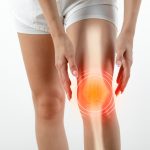What is keratosis pilaris?
Keratosis pilaris is a common, mostly harmless skin condition that causes small, rough, white or reddish bumps or patches on the skin. While it can occur at any age, keratosis pilaris most commonly affects children and adolescents. The symptoms often improve and then disappear entirely early in adult life.
What are the symptoms of keratosis pilaris?
Keratosis pilaris usually results in small, hard, flesh-coloured or white lumps, which can have an acne-like or rough appearance. The bumps, which can pepper the skin, are commonly found on areas of dry skin on the upper arms, thighs, chest and, sometimes, the face.
The affected skin may become sandpaper-like. If the bumps cause itching or irritation, they may become red and slightly inflamed and cause scarring.
Many bumps will also contain an ingrown hair.

What causes keratosis pilaris?
Keratosis pilaris is caused by the build-up of a skin protein called keratin. Excess keratin can block hair follicles or pores in the skin, forming small, hard bumps.
The reason for the build-up of keratin is unknown, but it often occurs alongside other skin conditions, such as dermatitis. In most cases it is a genetic condition that runs in families.
Keratosis pilaris is more common in winter, when the skin tends to be drier.
When should I see my doctor?
If symptoms are causing you or your child anxiety or discomfort, talk to your doctor. They can give you some options for treating keratosis pilaris.
How is keratosis pilaris treated?
Keratosis pilaris is often a mild condition that doesn’t require medical treatment and usually disappears by the age 30.
Below are a number of things you can do to help reduce your symptoms:
- Try not to scratch the bumps.
- Treat the skin gently and avoid using harsh chemicals, which can dry out the skin.
- Wash using a mild soap and warm, rather than hot, water.
- Gently pat or blot the skin dry and follow up by applying a soothing moisturising cream that contains lanolin, petroleum jelly or glycerine.
- Avoid friction from tight clothes.
A variety of medicated creams, some of which are available over the counter, may also help to relieve symptoms. The creams contain ingredients, such as retinoids (vitamin A), urea, alpha-hydroxy acid, lactic acid or salicylic acid, that help to break down the excess keratin and remove dead skin. However, these chemicals can be harsh and cause dry skin and irritation, so they may not be suitable for children.
Laser therapy can be used to successfully treat keratosis pilaris that has become very red and inflamed.



